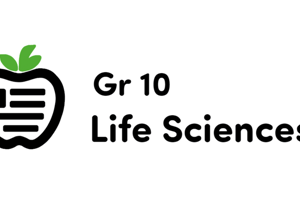Podcast
Questions and Answers
Which element is essential for maintaining a healthy immune system and wound healing?
Which element is essential for maintaining a healthy immune system and wound healing?
- Phosphorus
- Argon
- Sulfur
- Zinc (correct)
What is the most abundant noble gas in the Earth's atmosphere?
What is the most abundant noble gas in the Earth's atmosphere?
- Neon
- Krypton
- Argon (correct)
- Helium
Which nonmetal is a major component of bones and teeth in living organisms?
Which nonmetal is a major component of bones and teeth in living organisms?
- Argon
- Sulfur
- Phosphorus (correct)
- Magnesium
Which element is bright yellow, brittle, and a key component in sulfuric acid production?
Which element is bright yellow, brittle, and a key component in sulfuric acid production?
In which form does phosphorus commonly exist and is used in matches and fireworks?
In which form does phosphorus commonly exist and is used in matches and fireworks?
Which element is used as a cooling agent in cryogenics and a filling gas in light bulbs?
Which element is used as a cooling agent in cryogenics and a filling gas in light bulbs?
Which element is the seventh most common in the Earth's crust?
Which element is the seventh most common in the Earth's crust?
Which element is involved in enzymatic reactions and collagen production?
Which element is involved in enzymatic reactions and collagen production?
Which element is widely used to relieve constipation and other health issues?
Which element is widely used to relieve constipation and other health issues?
Which element is known for its essential role in many enzyme systems in biology?
Which element is known for its essential role in many enzyme systems in biology?
Which element is described as a lustrous metal with a silvery-white appearance?
Which element is described as a lustrous metal with a silvery-white appearance?
Which element was isolated using electrolysis by Humphry Davy in 1808?
Which element was isolated using electrolysis by Humphry Davy in 1808?
Study Notes
Chemical Elements: A Closer Look at Magnesium, Zinc, Argon, Sulfur, and Phosphorus
In the vast expanse of chemistry, the study of chemical elements is paramount. These fundamental substances build all material in the universe, from the lightest gas to the densest metals. Among the many elements, magnesium, zinc, argon, sulfur, and phosphorus each hold unique roles and significance.
Magnesium (Mg): The Lightweight Metal
Magnesium is a lightweight, silvery white alkaline earth metal. It is the seventh most common element in the Earth's crust and is essential to many forms of life. Despite its abundance, magnesium was not isolated until 1808 by Humphry Davy, who used electrolysis to separate it from sea salt. Magnesium plays a vital role in biology, acting as a cofactor in numerous enzyme systems and serving structural purposes within cell walls. Mg-based medicinal products, such as magnesium oxide, are widely used to relieve constipation and other health issues.
Zinc (Zn): An Essential Trace Mineral
Zinc is a bluish-white, lustrous metal with a silvery-white appearance. It is the 24th most common element in the Earth's crust and is essential for human health. Zinc is a trace mineral, meaning it is required in small amounts by living organisms. Zinc is involved in numerous enzymatic reactions, including the production of collagen, a protein that gives strength and elasticity to skin, bones, and connective tissues. Zinc is also essential for maintaining a healthy immune system and wound healing.
Argon (Ar): The Most Abundant Noble Gas
Argon is a noble gas, colorless and odorless, and is the third most abundant component of the Earth's atmosphere. It is also present in natural gas and makes up about 1% of the atmosphere. Argon is used in a variety of applications, such as a shielding gas in welding and metal fabrication, a filling gas in light bulbs, and a cooling agent in cryogenics. Argon is also used in the production of high-purity argon for scientific research purposes.
Sulfur (S): The Yellow Nonmetal
Sulfur is a nonmetal with a molecular formula S8. It is a bright yellow, brittle, and nonmetallic element. Sulfur is obtained from natural sources or is synthesized artificially. It is used in the production of sulfuric acid, which is a key component in fertilizers, detergents, and many other products. Sulfur also has a significant role in biology, as it is the main component of the human body's sulfur-containing amino acids, cysteine and methionine.
Phosphorus (P): The Bone-Building Element
Phosphorus is a nonmetal with a wide range of applications. It is a major component of bones and teeth and is essential for the functioning of cells in all living organisms. Phosphorus is also used in the production of fertilizers, detergents, and other industrial products. Phosphorus exists in several forms, the most common being white phosphorus, which is highly reactive and flammable. Red phosphorus is more stable and is commonly used in matches and fireworks.
These five elements, along with many others, form the building blocks of our world. They are essential for life and have numerous applications in technology, industry, and our daily lives.
Studying That Suits You
Use AI to generate personalized quizzes and flashcards to suit your learning preferences.
Description
Explore the unique properties and significance of magnesium, zinc, argon, sulfur, and phosphorus. Learn about their roles in biology, industry, and everyday life.




